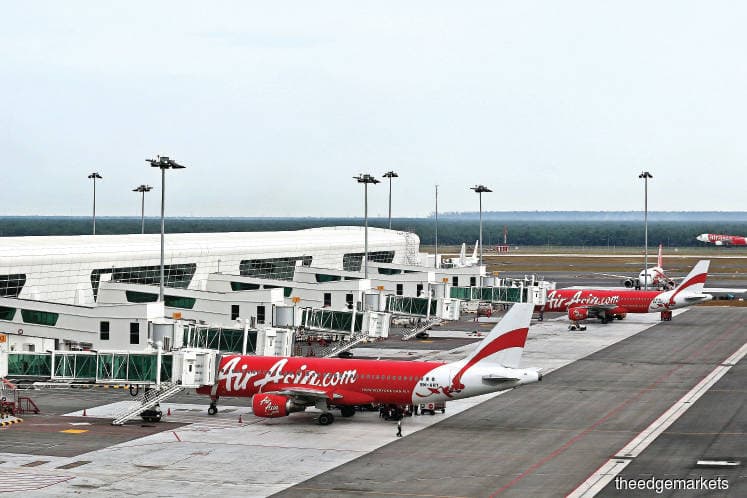
This article first appeared in The Edge Financial Daily on January 29, 2019
KUALA LUMPUR: AirAsia Group Bhd and its low-cost long-haul affiliate AirAsia X Bhd (AAX) ended 2018 with strong operational results, despite a challenging fourth quarter (4Q) on increased capacity.
For 2018, total passengers handled by AirAsia’s Malaysian, Indonesian and Philippine operations increased 14% to 66.26 million passengers from 58.31 million in 2017. Available seat per kilometre (ASK) rose 14% year-on-year (y-o-y), while the load factor fell three percentage points (ppts) to 85%.
However, taking all the six operations including Thailand, India and Japan, the budget airline said 2018 was another year of tremendous growth, with total passengers carried increasing 14% to 74.8 million passengers compared with that in 2017.
“The airline also significantly expanded its capacity over the year, with ASK up 15% and managed to achieve the group’s full-year load target of 85%. The group’s total fleet size closed at 224 [in 2018],” it added.
AAX’s Malaysian operations also saw a record number of passengers flown at 6.17 million, up 6% y-o-y, in line with a 7% capacity growth.
“This was mainly driven by four new routes introduced in 2018 and [its] continued focus on building market share in core markets, while moving away from non-core countries such as Iran, Nepal and the Maldives,” it said.
For the October to December 2018 quarter, AirAsia’s Malaysian, Indonesian and Philippine operations carried 16% more passengers to 12.11 million from 10.44 million a year ago.
AirAsia said ASK rose 14% y-o-y in the three months ended Dec 31, 2018 (4Q18). However, the passenger load factor fell four ppts to 84% as a result of a significant 21% increase in capacity y-o-y. “This was in line with our strategy to continuously grow our market share.”
The airline noted its Malaysian operations carried 9% y-o-y more passengers to 8.52 million in 4Q18, and recorded a 9% y-o-y increase in ASK. The load factor was down five ppts to 84%, owing to a 16% increase in capacity.
“Also, eight aircraft previously operated by PT Indonesia AirAsia Extra were transferred back to AirAsia Indonesia. As a result, 4Q18 numbers were higher than usual, recording a 56% y-o-y increase in passengers carried while the load factor was up three ppts to 82%.”
The Philippine operations recorded a 21% y-o-y increase in passengers carried in 4Q18, on a higher capacity of 20%, while the load factor was unchanged at 89%, it added. AirAsia said its Thai, Indian and Japanese operations saw increases in passenger volume in 4Q18, up 3%, 37% and 122% y-o-y respectively.
AAX carried 3% y-o-y fewer passengers at 1.5 million in 4Q18 from 1.55 million passengers a year ago. The load factor came in lower too at 78%. AAX attributed the weaker quarterly performance to an additional capacity of 2% y-o-y deployed to core markets for the year-end travelling season.
Additionally, several routes — Japan and Indonesia — were impacted by natural disasters. “The load factor for the Kathmandu route was also significantly impacted on the back of a gradual route termination in 4Q18, as well as the Nepalese government’s ban on workers going to Malaysia,” it said in a separate statement.
ASK for 4Q18 was flat as capacity was deployed to shorter routes since the Tehran and Kathmandu routes’ termination during the year. Two aircraft were added during the quarter, hence AAX’s total fleet size in Malaysia grew to 24 Airbus A330s as at end-December 2018.